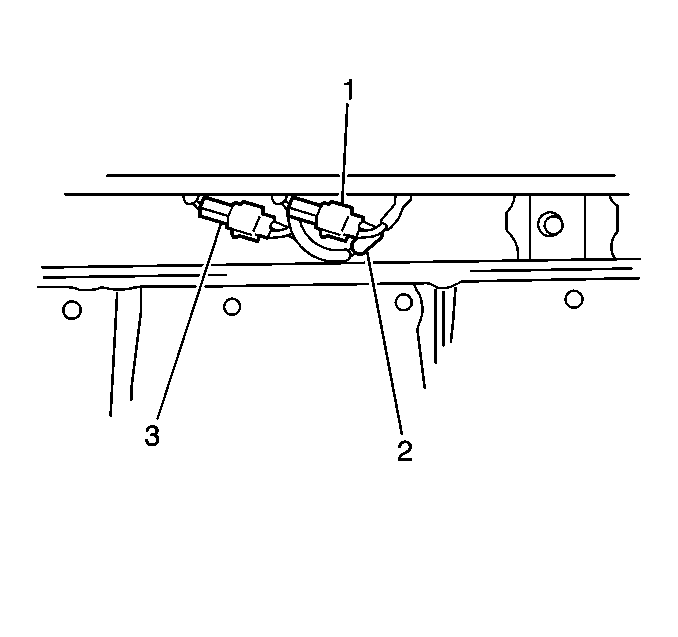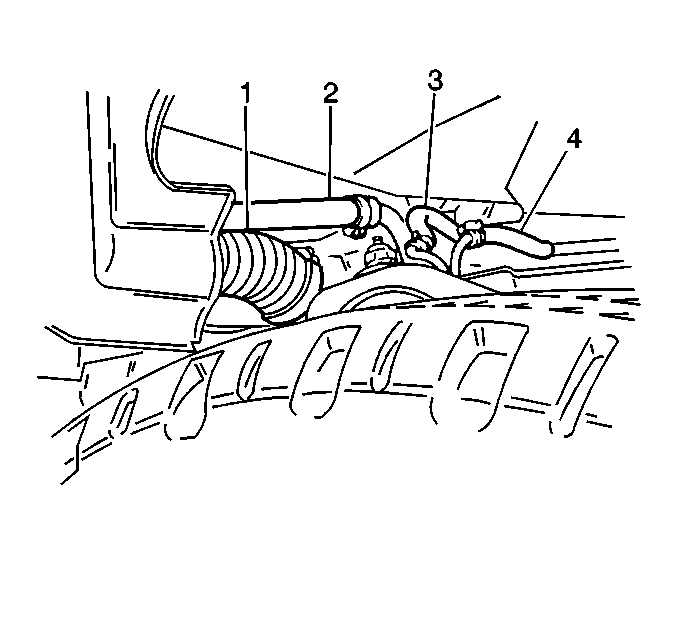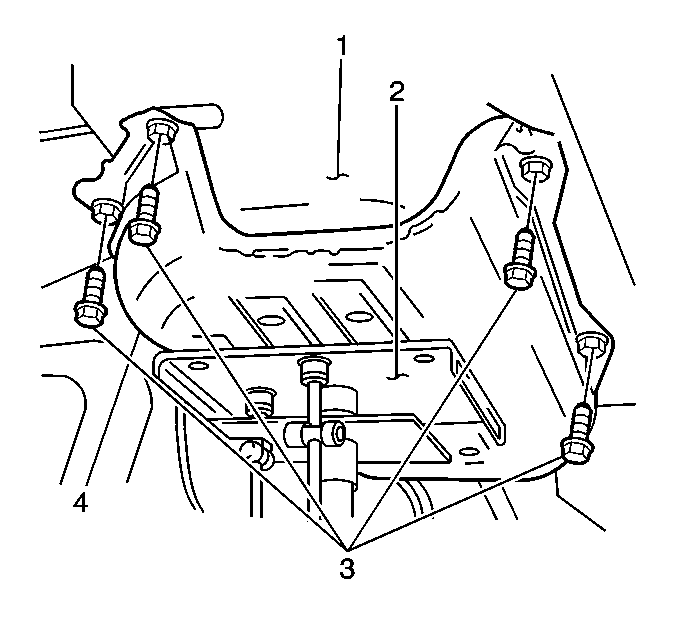Removal Procedure
- Relieve the fuel system pressure. Refer to Fuel Pressure Relief .
- Drain the fuel tank. Refer to Fuel Tank Draining .
- Raise and suitably support the vehicle. Refer to Lifting and Jacking the Vehicle in General Information.
- Disconnect the fuel level sensor (fuel gauge sending unit) electrical connector (2).
- Disconnect the fuel pump electrical connector (1).
- Disconnect the fuel tank pressure sensor electrical connector (3).
- Remove the end bolt from the fuel feed inlet hose to the fuel filter.
- Disconnect the fuel feed inlet hose from the fuel filter.
- Loosen the clamp from the fuel breather hose and the fuel tank.
- Disconnect the fuel breather hose (2) from the fuel tank.
- Loosen the clamp from the fuel filler neck and the fuel tank.
- Disconnect the fuel filler neck (1) from the fuel tank.
- Loosen the clamp and disconnect the fuel return hose (4) from the fuel return pipe.
- Loosen the clamp and disconnect the fuel vapor hose (3) from the fuel vapor pipe.
- Remove the six bolts (3) and the fuel tank protector (4), with the fuel tank (1), from the vehicle.
- Support the fuel tank, with a hydraulic jack (2), while lowering the fuel tank from the vehicle.



Installation Procedure
- Install the fuel tank (1), with the fuel tank protector (4), to the vehicle underbody with a hydraulic jack (2).
- Secure the fuel tank protector (4), and the fuel tank (1), to the vehicle with the six bolts (3).
- Connect the fuel vapor hose (3) to the fuel vapor pipe.
- Secure the fuel vapor hose with one clamp.
- Connect the fuel return hose (4) to the fuel return pipe.
- Secure the fuel return hose with one clamp.
- Install the fuel filler neck (1) to the fuel tank.
- Secure the fuel filler neck with one clamp.
- Connect the fuel breather hose (2) to the fuel tank.
- Secure the fuel breather hose with one clamp.
- Connect the fuel feed inlet hose to the fuel filter.
- Secure the fuel feed inlet hose with one bolt.
- Connect the fuel level sensor (fuel gauge sending unit) electrical connector (2).
- Connect the fuel pump electrical connector (1).
- Connect the fuel tank pressure sensor electrical connector (3).
- Secure the rear crossmember with four bolts.
- Lower the vehicle.
- Refill the fuel tank.
- Inspect for fuel leaks.
- Connect the negative battery cable.
- Turn ON the ignition for three seconds.
- Turn OFF the ignition.
- Check for any fuel leaks and repair as necessary.

Notice: Use the correct fastener in the correct location. Replacement fasteners must be the correct part number for that application. Fasteners requiring replacement or fasteners requiring the use of thread locking compound or sealant are identified in the service procedure. Do not use paints, lubricants, or corrosion inhibitors on fasteners or fastener joint surfaces unless specified. These coatings affect fastener torque and joint clamping force and may damage the fastener. Use the correct tightening sequence and specifications when installing fasteners in order to avoid damage to parts and systems.
Tighten
Tighten the fuel tank protector and the fuel tank
mounting bolts to 35 N·m (26 lb ft).

Tighten
Tighten the fuel feed inlet hose-to-fuel filter
bolt to 35 N·m (26 lb ft).

Tighten
Tighten the rear crossmember bolts to 70 N·m
(51 lb ft).
Tighten
Tighten the negative battery cable-to-negative battery
terminal retainer bolt to 15 N·m (11 lb ft).
